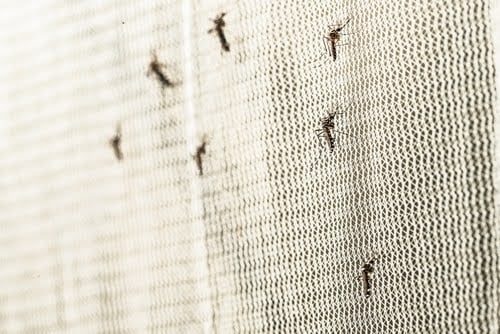Summer is here, which means there are bound to be stinging insects buzzing around. While these pollinators play a valuable role in our ecosystem, you’ll want to keep your distance. To stay safe and sting-free this summer, we’ve created this guide on bees, wasps, and hornets. Let’s get to know each one:
Bumblebees: The Fuzzy Foragers
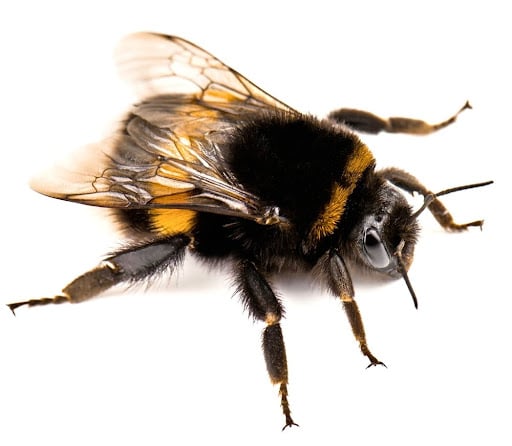
There are over 200 types of bumblebee in the world, and over fifty percent of those can be found in North America. These tiny stinging insects feed primarily on the pollen and nectar of flowers. They range in size from 0.75 to 1.5 inches and are fuzzier than the other insects on this list.
They live in large colonies that are most often found underground in rodent holes, beneath sheds, or in compost heaps. It’s rare, but if you find a bumblebee nest, it’s best to leave it alone and avoid disturbing it.
A bumblebee sting feels relatively mild compared to other stinging insects. However, their venom is stronger than that of wasps or hornets. Bumblebees are generally not aggressive and typically sting only when they feel their nest is threatened or if they are provoked. Unlike honeybees, bumblebees do not lose their stinger after stinging, allowing them to sting multiple times if necessary.
Carpenter Bees: The Wood Burrowers
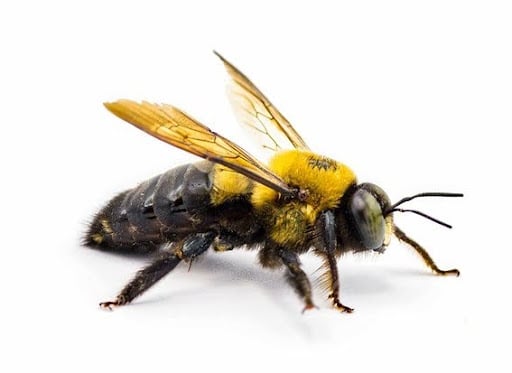
Carpenter bees are smaller than their fuzzy cousins, the bumblebees. Ranging in size from 0.5 to 1 inch, they can be identified by their shiny abdomen and yellow thorax. Carpenter bees are often linked to property damage, as they burrow into wood in order to build their nests and lay eggs. A carpenter bee nest is most commonly found under decks, sills, or other types of untreated wood.
If you encounter a nest, it's best to consult pest control professionals, as these bees can be quite territorial. Only female carpenter bees have stingers, but they are capable of intense, painful stings that can hurt for days. Wrap stings in ice to relieve pain and reduce swelling.
Honey Bees: The Essential Pollinators
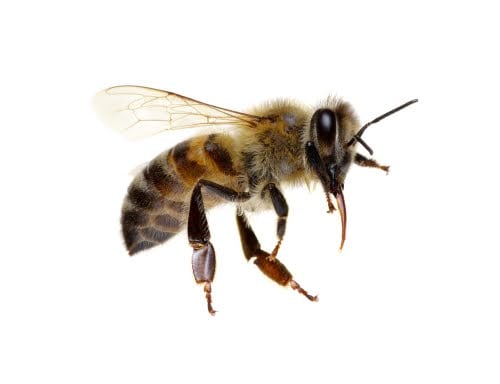
Honey bees not only produce honey, as their name suggests, but they also play a critical role in pollinating important plants and flowers.
Honey bees are small, ranging in size from 0.5 to 0.75 inches and typically only sting when threatened. Honey bees are smaller, less round, and less fuzzy than bumblebees.
A honey bee hive should not be harmed unless the bees pose an immediate threat or safety concern. Nests are commonly found on the ground beneath a flat object or in an unused rodent hole close to dry vegetation like grass or moss. Should you need to have a colony removed, be sure the pest control company you contact practices responsible removal and only exterminates as a last resort.
Wasps: The Nest Builders
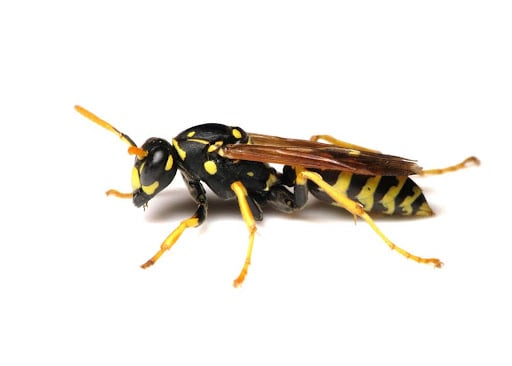
Wasps come in different varieties, but paper wasps are the most common. Paper wasps are typically 1 inch in length and appear black and brown with black wings and yellow markings. They build their nests under eaves or in outdoor lighting and are aggressive, but they will only sting if they feel threatened. Always call a professional when dealing with a wasp nest. Wasps have a bad reputation, but their stings are less dangerous than those of bees, which have more venom. However, unlike bees, wasps can sting you repeatedly, leading to more pain.
Hornets: The Protectors
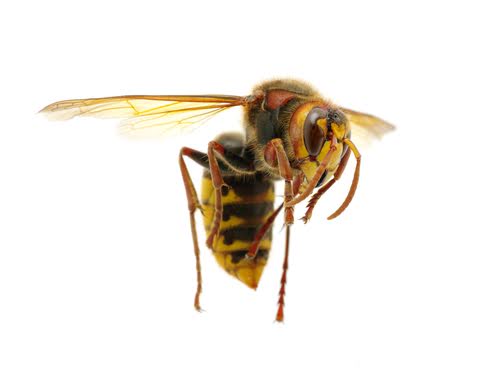
Be cautious around hornets, but don’t be too quick to get rid of them. They are considered beneficial, helping with pollination and getting rid of other harmful insects.
Hornets tend to be larger than bees or wasps. The bald-faced hornet workers are typically about 0.75 inches long and black in color with a white face. You’ll likely see hornet nests in trees or chimneys.
Hornet stings are considered more painful than bee or wasp stings. Like wasps, however, hornet stings contain less venom and are less dangerous than bee stings.
Yellow Jackets: The Ground Nesters
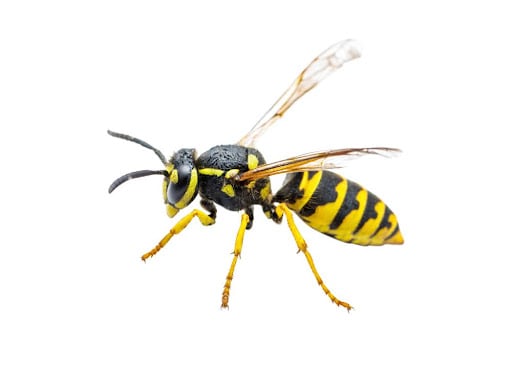
Yellow jackets are a type of wasp and are smaller than many of the insects above. They average about 0.5 inches long. These common insects, black with yellow markings, will build their nests in the ground or in trees. Yellow jackets are considered beneficial insects, as they eat other insect species but they pose a threat if their nests cause structural damage. Call the professionals at Plunkett’s if you think the insects are damaging your property.
Like other wasps, yellow jackets have painful stings. They are aggressive and can attack multiple times when threatened.
How to Treat Insect Stings

If you or a loved one gets stung by one of these insects, follow these steps:
- Remove the Stinger: If the stinger is visible, remove it carefully using a pair of tweezers to minimize the amount of venom released.
- Clean the Area: Wash the sting site with soap and water to prevent infection.Apply a
- Cold Compress: Using a cold compress or an ice pack can help reduce swelling and numb the pain.
- Over-the-Counter Treatments: Consider using over-the-counter pain relievers or antihistamines to alleviate pain and itching.
- Monitor for Allergic Reactions: While rare, some individuals may experience severe allergic reactions to bee or wasp stings, including difficulty breathing, swelling of the face or throat, and dizziness. If you notice any of these symptoms, seek medical attention immediately.
Keep Stinging Insects Away with Plunkett’s Pest Control
Although bees, wasps, and hornets are beneficial to the environment, it’s no fun having them around while hanging out in your yard. Plunkett’s Pest Control can remove and prevent bees and wasps safely and efficiently, giving you peace of mind. If stinging insects are posing a threat, contact our pest control professionals.

